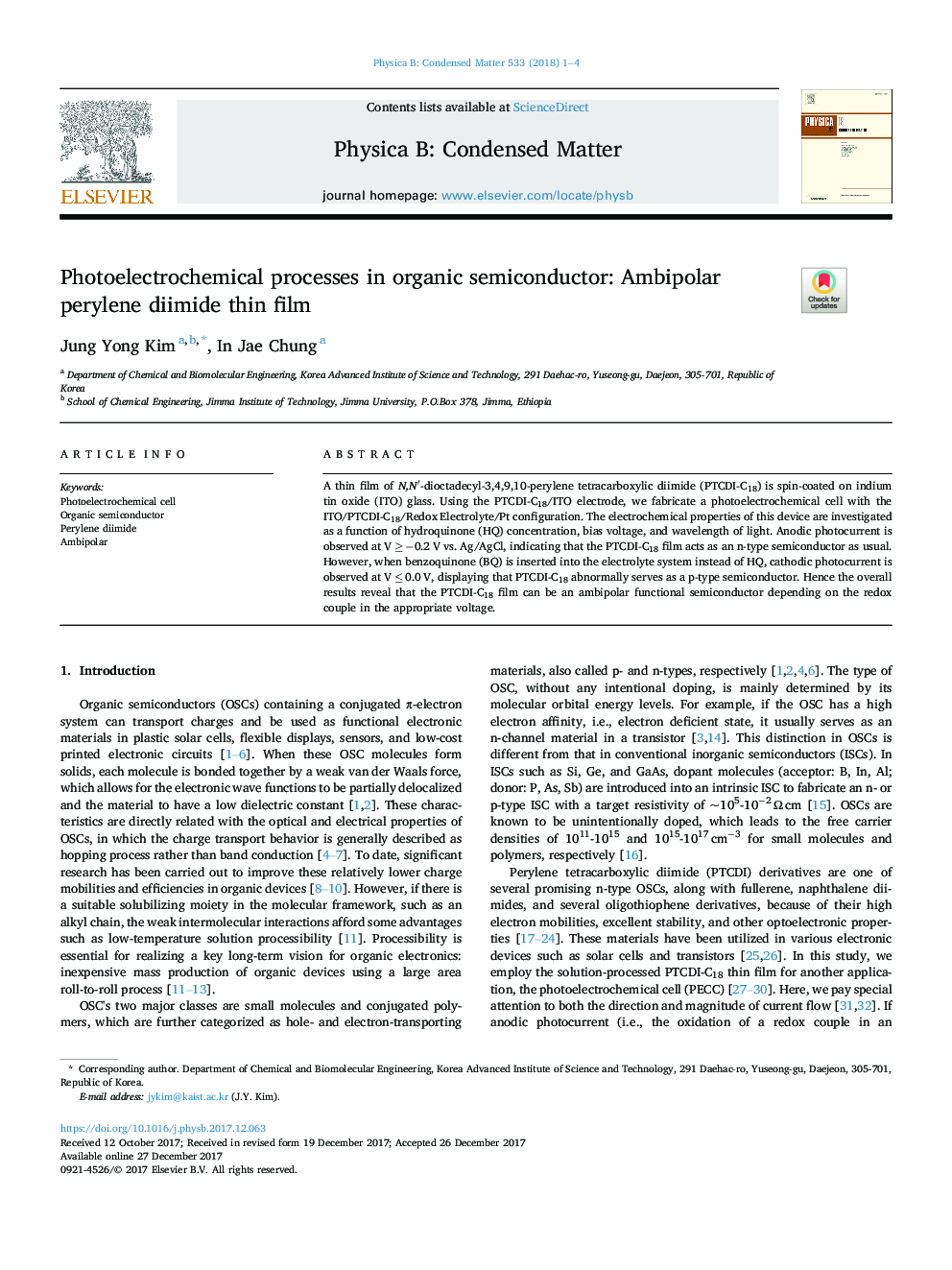| Article ID | Journal | Published Year | Pages | File Type |
|---|---|---|---|---|
| 8161294 | Physica B: Condensed Matter | 2018 | 4 Pages |
Abstract
A thin film of N,Nâ²-dioctadecyl-3,4,9,10-perylene tetracarboxylic diimide (PTCDI-C18) is spin-coated on indium tin oxide (ITO) glass. Using the PTCDI-C18/ITO electrode, we fabricate a photoelectrochemical cell with the ITO/PTCDI-C18/Redox Electrolyte/Pt configuration. The electrochemical properties of this device are investigated as a function of hydroquinone (HQ) concentration, bias voltage, and wavelength of light. Anodic photocurrent is observed at Vâ¯â¥â¯â0.2â¯V vs. Ag/AgCl, indicating that the PTCDI-C18 film acts as an n-type semiconductor as usual. However, when benzoquinone (BQ) is inserted into the electrolyte system instead of HQ, cathodic photocurrent is observed at Vâ¯â¤â¯0.0â¯V, displaying that PTCDI-C18 abnormally serves as a p-type semiconductor. Hence the overall results reveal that the PTCDI-C18 film can be an ambipolar functional semiconductor depending on the redox couple in the appropriate voltage.
Related Topics
Physical Sciences and Engineering
Physics and Astronomy
Condensed Matter Physics
Authors
Jung Yong Kim, In Jae Chung,
